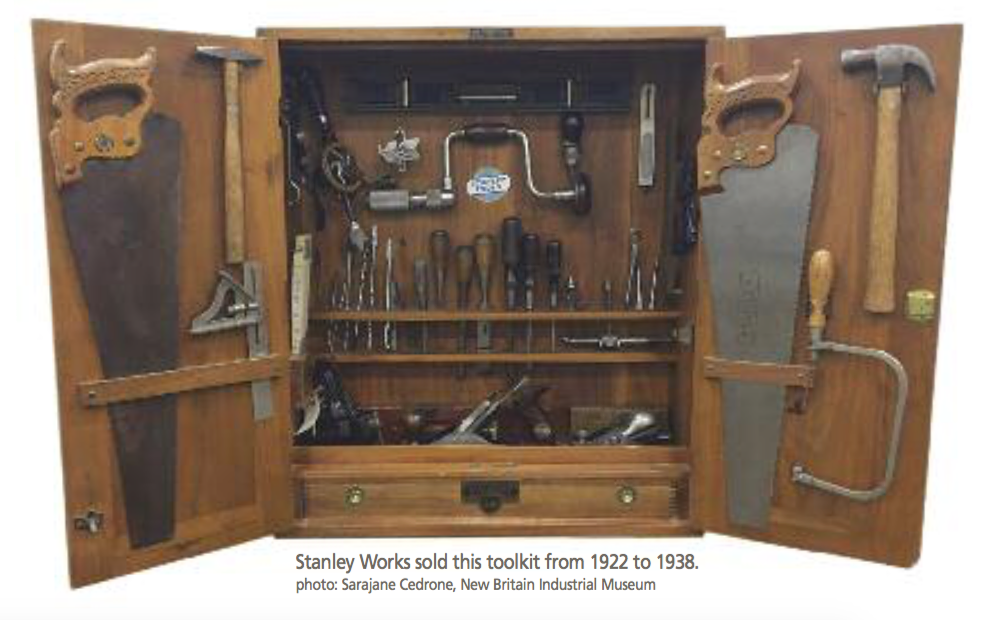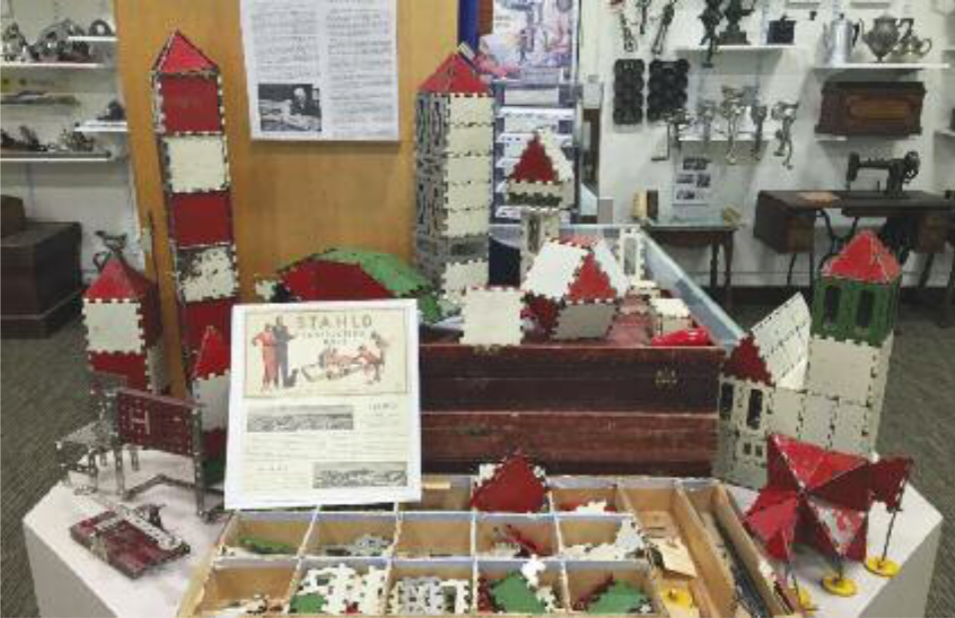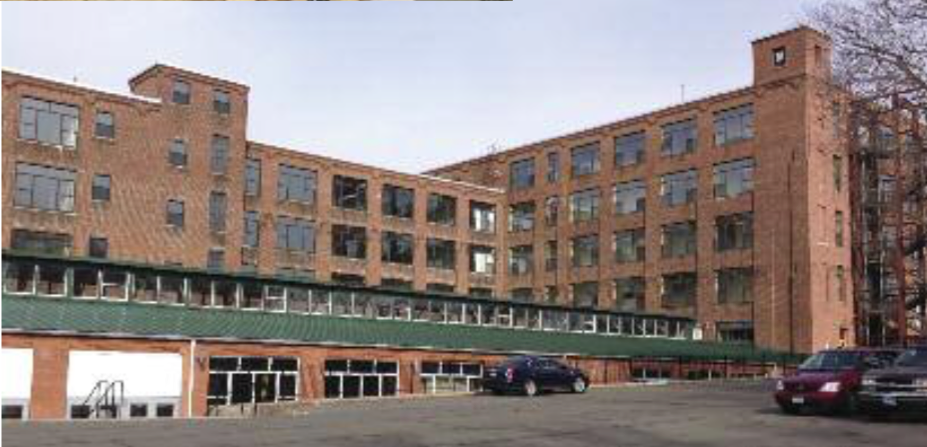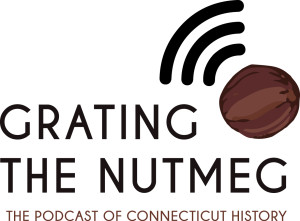By Sarajane Cedrone
(c) Connecticut Explored, Winter 2015-2016
Subscribe/Buy the Issue!
 Nestled in a corner of CCSU’s Institute of Technology and Business Development in downtown New Britain is what Karen Hudkins describes as “Connecticut’s best-kept secret:” the New Britain Industrial Museum. Hudkins, the museum’s executive director, shepherds an ever-expanding collection that provides visitors with perspective on the last 200 years of invention and industry in the “Hardware City of the World,” as it is sometimes called. New Britain earned its reputation, in part, by being granted more patents than any other city in the United States between 1812 and 1820, according to James Shepard’s New Britain Patents and Patentees (1901). Today, more than 100 manufacturing companies operate in New Britain; 7 of those are more than 100 years old.
Nestled in a corner of CCSU’s Institute of Technology and Business Development in downtown New Britain is what Karen Hudkins describes as “Connecticut’s best-kept secret:” the New Britain Industrial Museum. Hudkins, the museum’s executive director, shepherds an ever-expanding collection that provides visitors with perspective on the last 200 years of invention and industry in the “Hardware City of the World,” as it is sometimes called. New Britain earned its reputation, in part, by being granted more patents than any other city in the United States between 1812 and 1820, according to James Shepard’s New Britain Patents and Patentees (1901). Today, more than 100 manufacturing companies operate in New Britain; 7 of those are more than 100 years old.
The New Britain Industrial Museum opened in 1995 with the mission to “use the collection and the story of New Britain’s manufacturing triumphs to increase pride in the community and inspire the next generation.” Located at 185 Main Street, the museum showcases hardware from big-name industrial companies such as Stanley Works, Fafnir Bearing, The American Hardware Company, North & Judd, Landers, Frary & Clark, and many others. Visitors will see diverse examples of classic Connecticut manufacturing, from the Companion sewing machine to Fafnir ball bearings and Stanley hand-saws. The diverse collection is a testament not only to the skill of those working in New Britain’s manufacturing companies, but also to their creativity.
One of the city’s leading 19th-century manufacturing companies was Stanley Works. Founded in 1843 by Frederick Trent Stanley and merged with the Stanley Rule and Level Company in 1920, Stanley Works grew from a modest local manufacturer to today’s multi-billion dollar company Stanley Black & Decker. During tough times, Stanley Works made good use of its community by going door-to-door to ask for donations from residents to help the company and by offering employees stock options, many of which are held by New Britain families to this day, according to Hudkins.
 Occasionally the company created products with its own employees in mind. In 1935, anticipating employees’ need for Christmas gifts for their children, Stanley Works introduced “Stanlo,” a construction set consisting of small, notched metal pieces which, when combined, could be transformed into any number of things—think industrial-age Legos.
Occasionally the company created products with its own employees in mind. In 1935, anticipating employees’ need for Christmas gifts for their children, Stanley Works introduced “Stanlo,” a construction set consisting of small, notched metal pieces which, when combined, could be transformed into any number of things—think industrial-age Legos.
The New Britain Industrial Museum is not the only organization dedicated to reviving and remembering Connecticut’s industrial past. The Connecticut Trust for Historic Preservation is working to, as its website says, “stimulate re-use of Connecticut’s vast historic industrial resources,” with the Making Places: Historic Mills of Connecticut project, funded by the State Historic Preservation Office, Connecticut Department of Economic and Community Development through the Community Investment Act. Wes Haynes, project director, and Renee Tribert, project manager,of the trust, are creating an inventory of empty mills, factory buildings, and related villages across the state (including properties from the early 19th century to 1965) and helping private developers with planning and funding rehabilitation for re-use by contemporary businesses. Too many of these complexes have become sources of blight, the Trust notes, and adapting them to new uses supports a community’s economic vitality and quality of life.

Landers, Frary & Clark, built 1908-1945, has been partially rehabbed. photo: Renee Tribert, CT Trust for Historic Preservation
The trust has catalogued and surveyed more than 20 buildings in New Britain, from Acme Tool and Manufacturing to the Parker Shirt Company. Meanwhile, between August 2014 and March 2015, the trust awarded $350,000 in planning grants to nine mill redevelopment projects including former rubber factories in Hartford and Naugatuck, thread mills in Willington, Putnam, and Norwich, a button and clothes fastener manufacturer in Cheshire, a lathe manufacturer in Torrington, a silver flatware factory in Hebron, and a trolley line powerhouse in Old Saybrook. The Trust also has a presentation ready for your town or city on the many successful mill adaptations around the state, and offers technical assistance to mill owners who need help addressing concerns about environment, building conditions, and market feasibility.
“American manufacturing isn’t dead,” as Hudkins puts it, “New Britain is not only a city that made things, but also one that innovated and invented things. We want people to be reminded that this is what America is.” The Connecticut Trust and the New Britain Industrial Museum are two organizations breathing new life into Connecticut’s industrial past and inspiring future development in the state by celebrating the institution that is industry in Connecticut.
Sarajane Cedrone was an editorial assistant for Connecticut Explored and is a 2015 graduate of the University of Hartford.
Explore!
Read more stories about products Made in Connecticut
 Listen to a podcast about the New Britain Industrial Museum
Listen to a podcast about the New Britain Industrial Museum
VISIT the New Britain Industrial Museum, 185 Main Street, New Britain. Nbindustrial.org, 860-832-8654
FIND OUT MORE about Making Places: Historic Mills of Connecticut at cttrust.org/cttrust/page/making-places-historic-mills-of-connecticut. Contact Renee Tribert, project manager, at rtribert@cttrust.org or 203-562-6312.
 Connecticut Explored received support fro this publication from the State Historic Preservation Office of the Department of Economic and Community Development with funds from the Community Investment Act of the State of Connecticut.
Connecticut Explored received support fro this publication from the State Historic Preservation Office of the Department of Economic and Community Development with funds from the Community Investment Act of the State of Connecticut.
